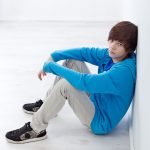Steven A. Bailey, ND
This case began with a phone call at home one evening from an existing patient. The daughter of a close friend of hers had just flown from the Czech Republic to bring her son to the Doernbecher Children’s Hospital in Portland.
They came for a barium study (they reported that barium was currently unavailable in the Czech Republic) and hopefully a diagnosis of what was causing this young boy’s severe gastrointestinal (GI) pain. At the time of this call, the mother was told that the study found nothing abnormal and that the boy would have to learn to live with the pain. The primary doctor in this case provided a prescription for an antidepressant and an antispasmodic, and suggested that these would help with this patient’s tolerance of this gastric, nerve pain reflex condition (no definitive diagnosis).
The Call for Help and First Visit
The mother was desperate for some help in understanding the cause and hopeful that something could be done to alleviate the pain other than symptom relief. We set up a time to see the boy and his mother the next day. She was hesitant to simply rely on prescriptions to control symptoms. She wanted answers and hopefully a solution to these problems.
The mother and 15-year-old Caucasian boy arrived at my office the next morning and we began our initial visit which involved a rather comprehensive review of medical history as well as physical evaluation. The young man was ashen in color (probably anemia) and was lean as he had lost significant weight since the onset of these pain symptoms approximately 6 months earlier. They reported no significant events with the onset of symptoms, which came on over a month’s duration, initially as moderate pain, now rated at a “9” by the young man (stating that it was the most severe pain he had endured, but he knew there must be a “10” on the scale).
A Comprehensive Intake and Evaluation
Going back in time, I asked about any other digestive problems that he had experience in previous years. I was informed that he had suffered with a colon intussusception when he was 9 years of age and that he had a successful removal of the dead tissue which included 18 inches of the colon and the distal 2 inches of the small intestine. The head of the GI department of Doernbecher’s Hospital denied any relationship between this previous condition and his current problem.
I asked about antibiotic exposure from this surgery and was told that he had struggled post-surgically and had 6 back-to-back strep infections also treated with antibiotics. I discussed the predictable side-effect of antibiotics in relationship to healthy gut flora and the inevitable overgrowth of many species of yeast and other opportunistic microbes. The case was beginning to look like a gradual progression of systemic and gastrointestinal yeast overgrowth.
I continued with a general physical examination and while evaluating the spine found a deep induration at the level of T-12/L-1. I asked about this scar and was told that when the boy was 18 months old, he suffered a broken femur and was placed in a full-length cast. Only on removing the cast did they discover that there was a pressure wound that had resulted from the cast pressing against this region of the spine. I now felt that I had a complete “Hippocratic Prognosis”. Hippocrates stated that a prognosis was “the complete understanding of a patient’s condition, the ability to state to the patient what is going on, what they experience as current symptoms, what led to the condition and what can be done to effect a reversal of this state.”
Initial Visit Prognosis
Initially at 18 months of age, the result of the pressure damage to the skin and subluxation of T-12 through L-2 impacted the nerve function of the lower celiac plexus resulting in atrophy of the large intestine.
This atrophy over a 7-year period set the conditional dysfunction that resulted in the intussusception and resultant and appropriate surgery. The impact of this condition, the surgery, and antibiotic therapy of the surgery and subsequent infections resulted in significant yeast overgrowth in the entire alimentary canal. Over the next 5 years this overgrowth resulted in chronic inflammation, mal-absorption of proteins, and anemia, as well as other nutritional deficiencies.
The Comprehensive Naturopathic Approach and Treatment
I treated the patient’s spinal subluxations at the time of the first visit and sent him home with digestive enzymes, a version of Robert’s formula and an immune product with garlic, Echinacea, and other anti-oxidants.
He returned the next week stating that the pain had reduced to as low as 6 at some times but that he had not taken these products regularly due to some additional diagnostic tests being performed at the hospital. The head of gastroenterology had contacted his mother after our first visit and said he felt bad about not helping them or discovering a cause and that he would like to add an endoscopic, colonoscopic and entire GI camera study with oral ingestion of a mini-camera to film all regions. They added a biopsy which revealed lymphocytic hyperplasia and no further understanding of the condition.
I treated his spine again, using peanut oil for its lymph supportive properties over the spine and convinced his mother to add a week to their US stay for additional treatments. The following visit I added a slippery fiber product to the enzymes and Robert’s formula and the patient reported continued reduction of pain and improved energy. His gray pallor was gone and he presented with a much more outgoing and positive demeanor.
His final week involved 2 more sessions of naturopathic manipulative therapy (NMT) with ultrasound and peanut oil applied to the region of T-10 through L-4. At the end of these NMT sessions the 13-year-old induration had lightened in color and filled out by more than 50%. His spine remained in normal position and he left for the Czech Republic with a pain level reported to be in the range of 4-6, more often at the level of a 4 which he felt he could live with.
Final Visit
In the final visit, I continued the review of my prognosis and treatment of this condition with the patient and his mother. I set them up with a 3-phase treatment of his yeast dominant dysbiosis with all the products and a letter to his Czech doctor and to immigration regarding the treatment plan and the nature of these many natural agents that they were bringing into their home country.
I started with Neem (Azadirachta indica), enzymes, slippery fiber and the Robert’s product. He continued to improve. The next phase included anti-fungal herbs and nutrients, probiotics, fiber, enzymes and Robert’s formula. This ended up being a 2-month process with the addition of nystatin for 20 days, the expected die-off aggravation and post die-off reduction to a 2-4 level of pain. Healing of the gut with a glutamine-based product and colostrum (continuance of enzymes and fiber) reduced the pain to a 1-3 level, which did not resolve until a gluten-free diet was incorporated into the program.
The Successful Outcome
Two years later he reports to his mother that his pain is 0-2 with the 2 following the inclusion of gluten or travel to the United States where his diet is less controlled. He takes no prescriptions and now no longer needs enzyme support or any of the products that we used to reverse this condition.
 Steven Bailey, ND is a graduate of NCNM, class of 1983. He has maintained a private practice in Portland, Oregon since September 1983. He served on the NCNM board of trustees from 1982-1991 and served as secretary to the board for 7 years. He has published 2 books, “The Fasting Diet”, 2002 and “Juice Alive”, 2007 SquareOnePublishers, with a second edition being released in February 2010. He has contributed to over one dozen books on health, appeared on over 700 radio shows, lectured at AANP, OANP and NWNP confer-ences. He is immediate past speaker of the House of Delegates and member of the Board of Directors for the AANP. He has taught at NCNM, and continues to occa-sionally guest lecture or present at Grand Round
Steven Bailey, ND is a graduate of NCNM, class of 1983. He has maintained a private practice in Portland, Oregon since September 1983. He served on the NCNM board of trustees from 1982-1991 and served as secretary to the board for 7 years. He has published 2 books, “The Fasting Diet”, 2002 and “Juice Alive”, 2007 SquareOnePublishers, with a second edition being released in February 2010. He has contributed to over one dozen books on health, appeared on over 700 radio shows, lectured at AANP, OANP and NWNP confer-ences. He is immediate past speaker of the House of Delegates and member of the Board of Directors for the AANP. He has taught at NCNM, and continues to occa-sionally guest lecture or present at Grand Round


![With Dog as My Co-Pilot: Between Death and Life [sic]](https://ndnr.com/wp-content/uploads/2016/02/40208203_ml-150x150.jpg)


